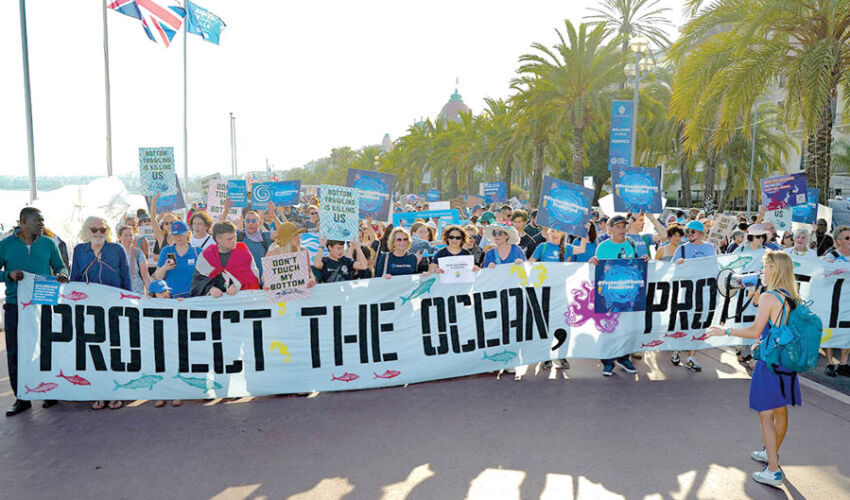
In the face of global uncertainty and doubts about the usefulness of multilateral processes, the countries represented in Nice generally agreed on the need for more ambitious solutions to our oceans. But this was only the first leg of the journey. Much more needs to be done on the eve of COP30 to protect this global commons that sustains life on the planet in a timely manner.
Among the commendable results is significant progress with the “High Seas Treaty.” Nineteen countries ratified it in Nice, and a dozen more have pledged to do so. So we are now on track for this landmark global agreement to enter into force by early 2026. It will create marine protected areas on the high seas, closing a huge hole in ocean governance.
The goal of introducing protected status for at least 30% of the world’s oceans by 2030 cannot be achieved without creating large protected areas in the vast high seas. This area represents two-thirds of the ocean and half of our planet’s surface. The challenge of creating an effective system of marine conservation is particularly acute for the polar regions, which are at the forefront of the climate crisis. The situation in the Southern Ocean is dire and requires immediate action to adopt long-standing proposals to establish marine protected areas. Such protection would preserve the ocean’s ability to mitigate climate change (by absorbing carbon) and increase the resilience of marine species to rising temperatures (e.g. by eliminating the effects of overfishing).
In Nice, several countries announced important new measures to protect marine nature in their national waters. In particular, French Polynesia announced the creation of the world’s largest network of protected areas covering nearly five million square kilometers. The conference also saw progress in combating plastic pollution and limiting the most harmful fishing practices.
However, all of these landmark achievements should not be confused with a turning point in ocean protection. Rather, they must all be part of a wider change: a rising tide of new ambitions with a long way to go.
Take a look at what still needs to be done. First, we are still woefully behind in establishing and enforcing marine protected status. Even after Nice, only 10% of the ocean has been put under protection in one way or another. That’s a far cry from the 30% we need to protect by the end of the decade. Worse, many protected areas are only nominally protected. For example, many had hoped that France, one of the environmental leaders, would announce a strict ban on bottom trawling in its protected areas. But there is still time, and other countries can set an example, including at COP30.
Second, dollars are still needed. There remains a big gap between what is promised and what is delivered. Globally, only $1.2 billion is allocated annually to ocean protection. This is less than 10% of the amount needed, although studies show that introducing protected status for 30% of the ocean by 2030 could generate $85 billion annually by 2050. Moreover, by redirecting funds to subsidize harmful forms of fishing in just ten countries, the hole in ocean protection funding could be closed.
Third, the silence in Nice on ending our dependence on fossil fuels has been deafening. Two years ago, at the COP28 conference in Dubai, the world promised to “phase out” fossil fuels. But now the issue seems to be debated again in every multilateral forum. The climate crisis is an existential threat to all life on our blue planet, so new unrestrained offshore oil and gas development is contrary to all our stated goals. A bright spot was the “Challenge Blue ONUW” (an initiative of Brazil and France, immediately supported by eight countries): the nations of the world are invited to include ocean-related measures in their national climate plans.
The conference in Nice should be a springboard for greater action to protect the oceans in Belém. COP30 is an ideal platform to announce new marine protected areas, as well as funding for nature protection in developing countries and resilience building in vulnerable island and coastal states.
John Kerry,
former U.S. Secretary of State and Presidential Special Envoy for Climate Action.
© Project Syndicate, 2025.
www.project-syndicate.org













